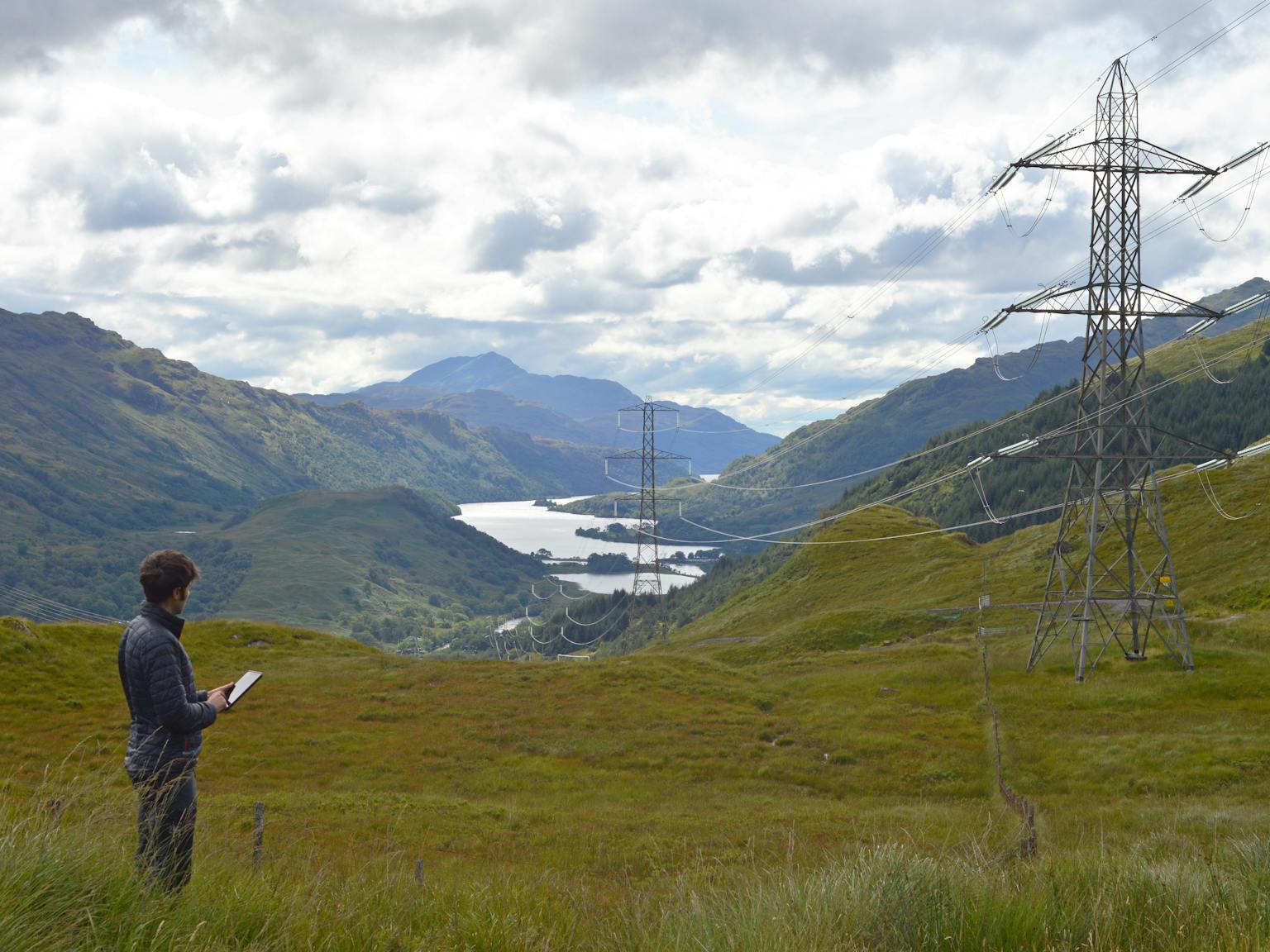
The voluntary carbon market
Carbon offsetting promises to help organisations reduce the environmental and carbon impact of their activities whilst funding much-needed nature restoration projects in the UK and globally. As more organisations commit to Net Zero targets, the market expects to continue its exponential growth in the near future, with offsetting often playing an integral part in many Net Zero ambitions. However, without stringent regulation, the voluntary carbon market could fail to deliver on its promises.
State of the market
Through the voluntary carbon market, companies, organisations and individuals can purchase carbon credits that permit the emission of carbon dioxide or carbon dioxide equivalent. For example, in construction, in order to be verified as net zero carbon the embodied carbon emissions associated with construction would need to be offset with credits. Credits can come in multiple forms, and can involve either carbon removal or avoidance. Carbon removal involves removing carbon from the atmosphere and sequestering it in the form of natural solutions, such as tree planting, or technological solutions such as carbon capture and storage (CCS). Carbon avoidance is where the carbon credit has prevented the emission of carbon into the atmosphere, such as protecting existing forests from logging or retrofitting existing inefficient buildings to improve their carbon performance.
Key terms
Scope 1 – Direct emissions from owned or controlled sources
Scope 2 – Indirect emissions from the generation of purchased energy consumed
Scope 3 – All other indirect emissions that can occur in a company’s value chain
Additionality – Would the emissions reductions have occurred anyway in a business-as-usual situation?
Leakage – Have emission reductions been negated by emission increases somewhere else?
Permanence – Will the emissions reduction provide meaningful longevity?
The seller tracks each credit to ensure that it can only be purchased or sold once. The latest research from Trove Research suggests the average price of a carbon credit is currently around $5-6/tCO2e, although prices jumped considerably in 2022 and in some cases may be $12/tCO2e.
Exponential growth
With this increase in demand, the voluntary carbon market hit over $1 billion in value in 2021 according to the long time commentator of the voluntary market, Forest Trends. The City of London Corporation predicts that by 2030, the market demands for offsets will be between 1.5-2 GtCO2e. The UK has seen this demand replicated, with land prices increasing throughout the country as the market looks to buy up land to plant trees.
Notable cases of this include Brewdog’s “Lost Forest”, a 3,766hectareplot of land in the Scottish Highlands, and Aviva purchasing 6,300 hectares of land in Aberdeenshire solely for offsetting purposes. A consequence of this uptick in demand is that hill ground with natural capital potential in the highlands now sells for double its value compared to seven years ago.
Due to this tremendous growth in demand for credits with limited supply, there is an urgent need to implement minimum standards in the market to prevent a race-to-the-bottom situation. There is a danger that cheap inferior quality offsets will make up the shortfall in demand, encouraging potentially damaging land-use conversions in the process.
In theory, carbon offsets from the voluntary carbon markets can increase funding into climate and nature positive investments, contribute towards national Net Zero targets and increase the sustainability of organisations globally. However, if the voluntary carbon market can live up to its promises depends on how efficiently the market is regulated. We need to ensure that the rules to the game are set and enforced before the market matures and becomes fully established, making retrospective action more difficult.
Buyer scrutiny
Currently, any organisation or individual can purchase carbon credits and use this to offset their emissions. There are no prerequisites required to purchase credits. Herein lies one of the main issues with the carbon market – we should not be allowing organisations acting in self-interest to decide which of their emissions they are allowed to offset.
In permitting this, we run the risk of organisations choosing to offset over attempting to further reduce their emissions. This is particularly pertinent when it comes to scope three emissions, which are particularly difficult to quantify and often expensive to reduce. The temptation for many, looking for the most cost effective route, will be to offset before investing in deep reductions. Although the sentiment of offsetting may be well-meaning, this approach will miss a plethora of opportunities to make the long-term emission cuts needed to achieve Net Zero.
Unregulated offsetting will allow businesses to ‘net-off’ high emitting activities and lock in carbon emissions for the coming decades, something the recent record heatwave in the UK shows we cannot afford. Organisations must provide evidence that they have reduced emissions, or that stringent plans are in place to do so, before they can purchase credits.

Comparing apples to bananas
Alongside issues with how organisations can purchase credits, there are also considerable issues in verifying the outcomes of offsetting projects used to generate credits. Although there are multiple verifying standards, such as the Gold Standard globally or the Woodland Carbon Code in the UK, each uses its own assessment criteria. This leads to a fragmented market where it is difficult for the purchasers of credits to distinguish the credentials of each credit.
The challenge lies in proving that projects adhere to the fundamental principles of permanence, additionality and avoidance of leakage. This can lead to inaccurate claims about each project’s impact on the climate, with one study suggesting that methodologies for quantifying carbon credits overstate their positive impact on deforestation and carbon sequestration[1]. Not-for-profit organisation Amazon Watch recently accused the LEAF Coalition, a much-touted carbon offsetting mechanism as a result of COP26, of “greenwashing” and “carbon market colonialism” in assessing their work in Peru[2]. In an unregulated market, false claims and mis-sold credits go unpunished, undermining confidence in the market and reducing its potential to have a real positive impact on nature and the climate.
Right tree, wrong place
Planting trees in the wrong place can further undermine confidence in the market. Converting peatland or heather moors into forestry has been shown to decrease carbon stocks over time, or at best maintain the same level. Historically, this has been a particularly common occurrence in the UK, where peatland has been converted to Sitka Spruce plantations. Ensuring that a carbon credit project – particularly afforestation projects – are undertaken in the correct location is crucial to their success. This will also address the aforementioned longstanding issues around additionality, leakage and permanence. Firm regulation, through centralised guidance, on where and when carbon sequestration projects take place with regular verification procedures will ensure that projects are delivering on what they claim to be.
Seeing the wood for the trees – what needs to happen?
For the carbon markets to contribute meaningfully to the climate crisis, we need an independent voluntary carbon market regulator with legal and enforceable powers. This will address two of the core issues in the carbon market: when and how organisations use offsets, and ensuring that projects achieve the environmental benefits they claim.
Regulation has the potential to ensure that organisations only offset residual emissions after they have shown that they have attempted to reduce, or have a robust plan to reduce, all of their emission scopes. Before purchasing offsets, the regulator would analyse the organisation’s current footprint methodology, carbon reductions to date, and future emissions reduction plan. If this passes a certain benchmark, organisations could then purchase offsets. Rules on what emissions someone could validly count as an offset in the voluntary market would further strengthen this. Standards would be set by following the principles outlined in the Oxford Offsetting Principles[1] and organisations would need to follow best practice guides from the Science Based Targets guidance[2] on how to reduce emissions across all scopes.
Oxford Principles for Net Zero Aligned Carbon Offsetting
The “Oxford Offsetting Principles” outline how offsetting needs to be approached to ensure it helps achieve a Net Zero society.
1. Cut emissions, use high-quality offsets, and regularly revise offsetting strategy as best practice evolves
- Prioritise: reducing your own emissions
- Ensure: environmental integrity
- Maintain: transparency
2. Shift to carbon removal offsetting
3. Shift to long-lived storage
4. Support the development of Net Zero aligned offsetting
To avoid projects not achieving the standards they claim, we also need core scientific and practical guidance on how and where to establish projects. This should be regularly updated as the latest evidence comes to light. A validation of carbon stocks should accompany this before projects commence, to set a baseline for the area. It should entail a periodic validation of the project (every 10 years, for example) to measure actual carbon stock growth or continuity against the measured baseline. By following this process, regulators can quantify each project’s carbon accumulation and identify those that haven’t achieved the levels claimed.
Regulations would also set a minimum higher price for credits. Gold Standard, one of the main current certifiers of carbon credits, argues that the minimum fair-trade price for carbon offsets should be €13/t CO2e for forest management credits[1]. Maintaining a minimum higher market price for credits will allow the highest quality projects to remain financially viable and prevent lower quality projects from reducing the market price and diluting the environmentally positive impact of the market. It will also encourage organisations to cut emissions deeply within their own activities before investing in offsetting.
Although regulation could address some of the most pertinent issues in the carbon market, it is important that the level of intervention is balanced as to not disincentivise private investment in nature recovery and carbon sequestration. The cost of regulation and regular monitoring will be challenging to the market that is accustomed to low prices from global carbon loss prevention credits. Finding the balance between robust and quantifiable carbon credits at a cost that businesses are willing to pay will not come easily.
Regulation could establish a robust and quantifiable carbon market, where organisations can purchase high-quality offsets to highlight their environmental credentials and negate unavoidable residual emissions. Although this is likely to come with a price tag, an effectively regulated market will positively contribute towards the UK’s 2050 Net Zero target by increasing carbon sequestration through private investment and avoiding the proliferation of inferior quality and potentially damaging offsets in the market.









